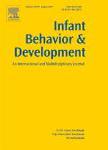版权所有:内蒙古大学图书馆 技术提供:维普资讯• 智图
内蒙古自治区呼和浩特市赛罕区大学西街235号 邮编: 010021

作者机构:Univ Autonoma Madrid Fac Psychol Dept Basic Psychol Ciudad Univ CantoblancoIvan Pavlov 6 Madrid 28049 Spain Polish Acad Sci Inst Psychol Neurocognit Dev Lab Jaracza 1 PL-00378 Warsaw Poland
出 版 物:《INFANT BEHAVIOR & DEVELOPMENT》 (Infant Behav. Dev.)
年 卷 期:2025年第78卷
页 面:102026页
核心收录:
学科分类:0402[教育学-心理学(可授教育学、理学学位)] 04[教育学]
基 金:Spanish Ministry of Education, Culture and Sports [FPU13/03508] Universidad Autonoma de Madrid Spanish Ministry of Economy and Competitiveness European Regional Developmental Fund (ERDF) [PSI2015-66509-P MINECO/FEDER] Ministry of Science, Innovation, and State Agency of Research [PID2020-117087GB-I00] National Science Centre of Poland [2023/48/C/HS6/00264]
主 题:Infants with an elevated likelihood of autism Temporal synchrony Selective attention Audio-visual speech Language development
摘 要:Detecting temporal synchrony in audiovisual speech in infancy is fundamental for sociocommunicative development, especially for language acquisition. Autism is an early-onset and highly heritable neurodevelopmental condition often associated with language difficulties that usually extend to infants with an elevated likelihood of autism. Early susceptibilities in still unclear basic mechanisms may underlie these difficulties. Here, we discuss why sensitivity to temporal synchrony in audiovisual speech should be investigated in infants with an elevated likelihood of autism as a candidate mechanism underlying language difficulties. We then review direct and indirect eye-tracking evidence. Although scarce, some studies suggest that detection of temporal synchrony in audiovisual speech may be reduced in infant siblings (but evidence is mixed);however, this does not seem to account for language difficulties. Instead, a lack of relationship between selective attention to the articulating mouth and language development may be a plausible candidate mechanism. However, longitudinal studies tracking both sensitivity to temporal synchrony and selective attention to talking faces in the first year are needed for further clarification. Our discussion highlights gaps in the literature, future research directions and implications for domain-general approaches to the emergence of autism.